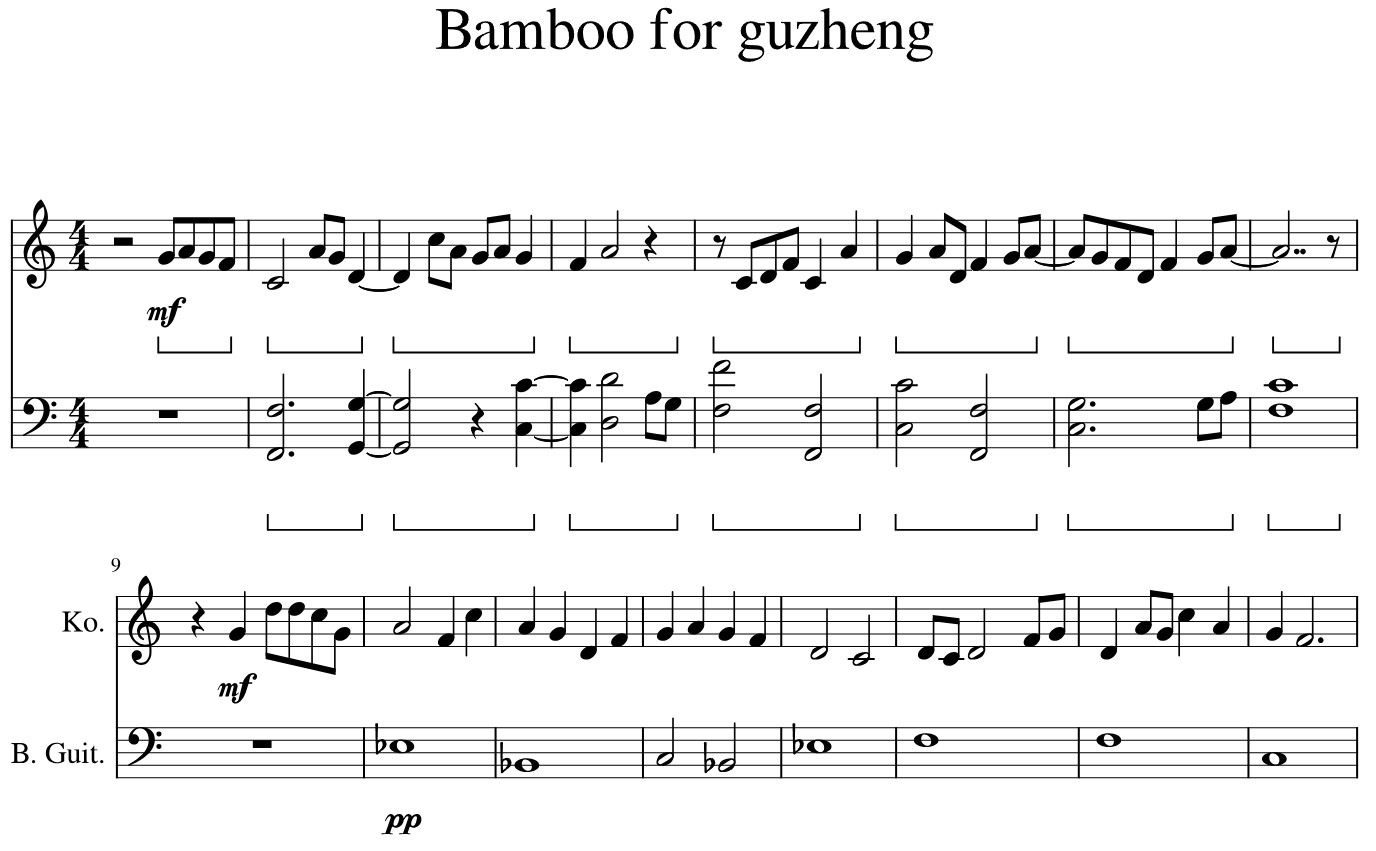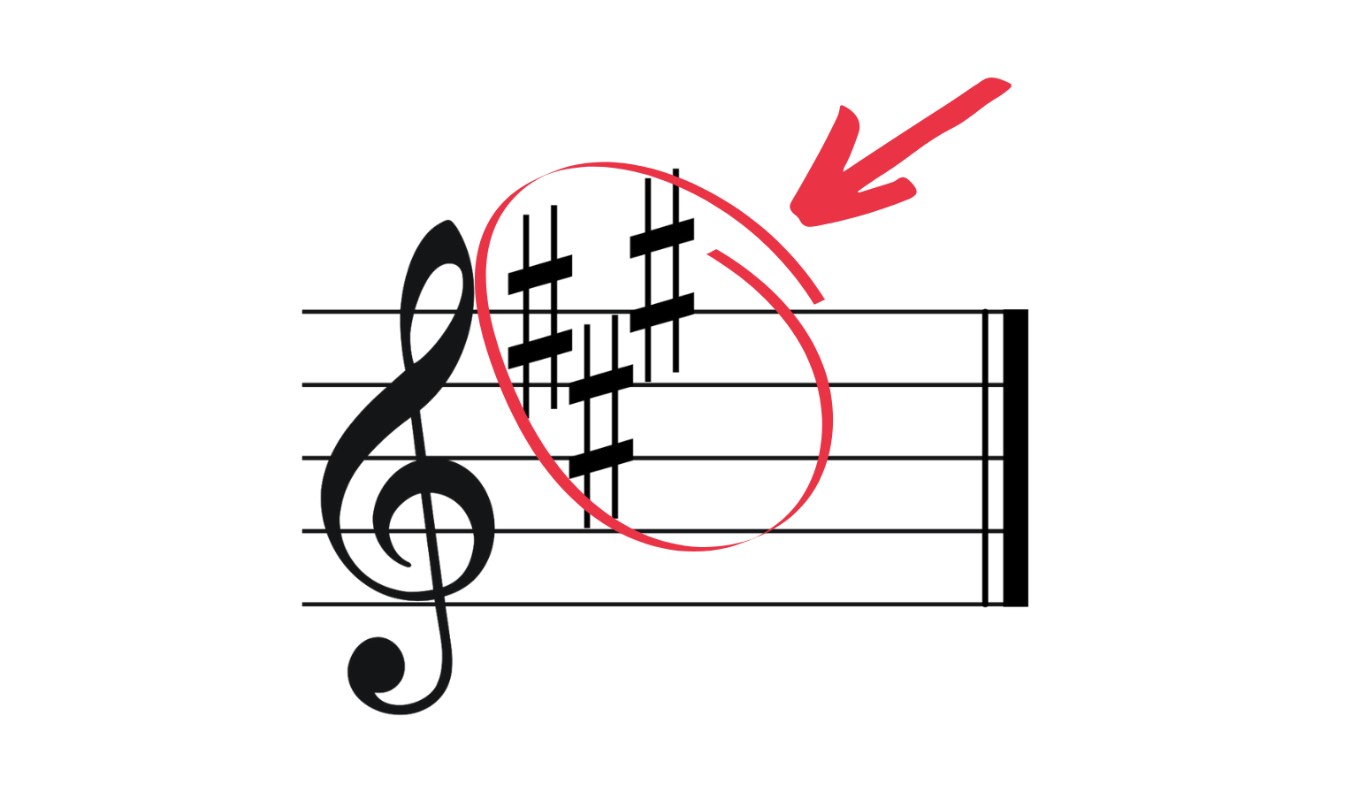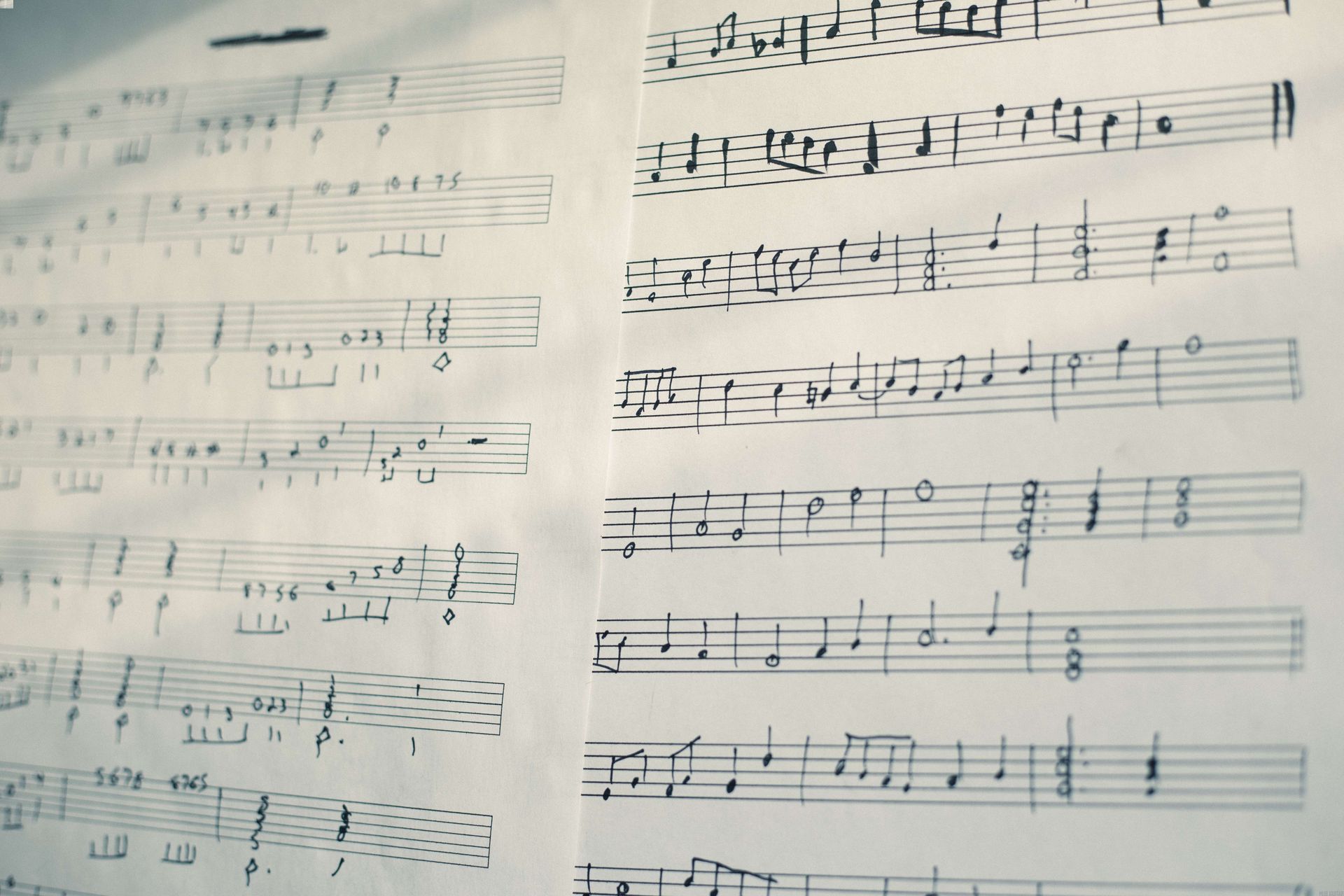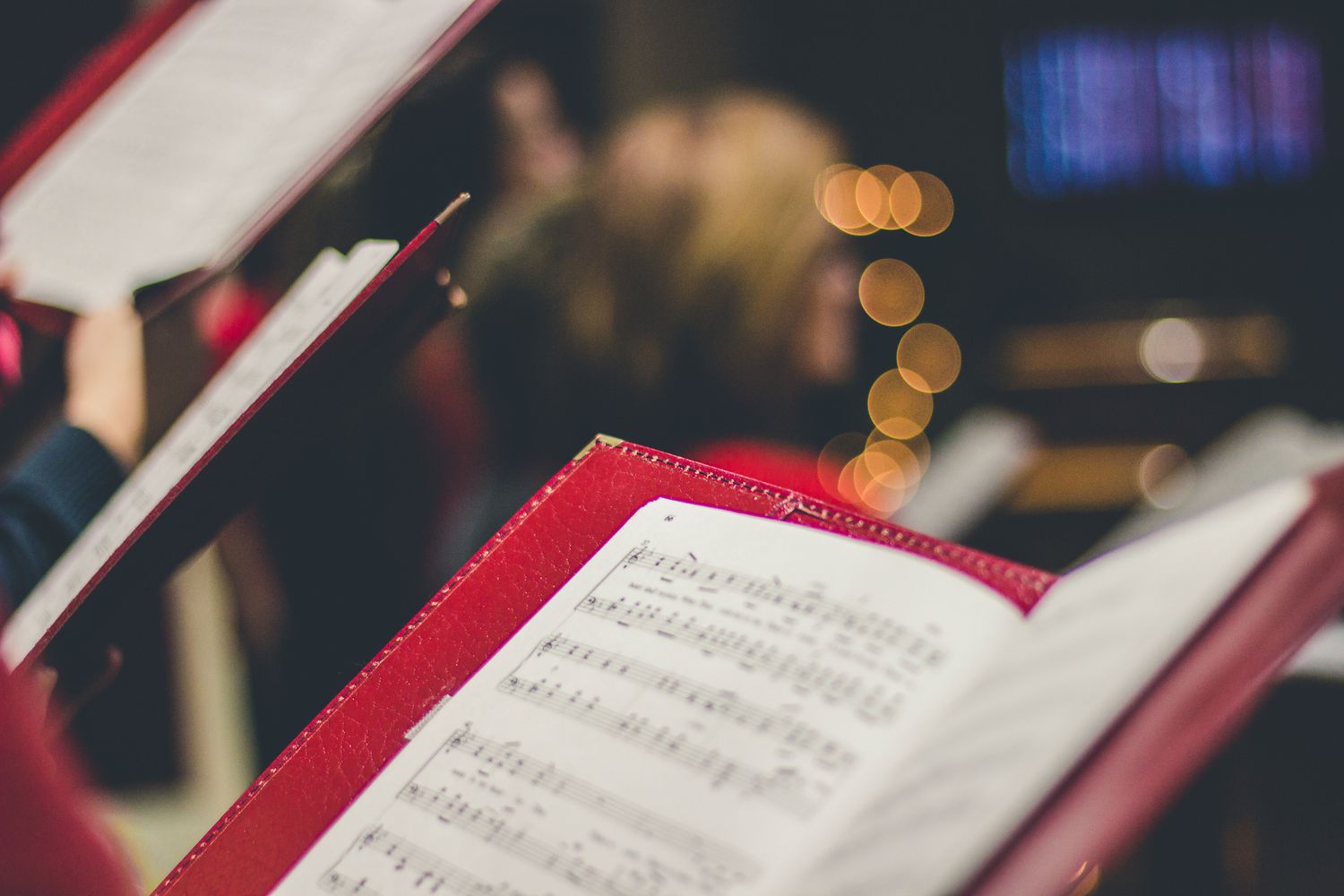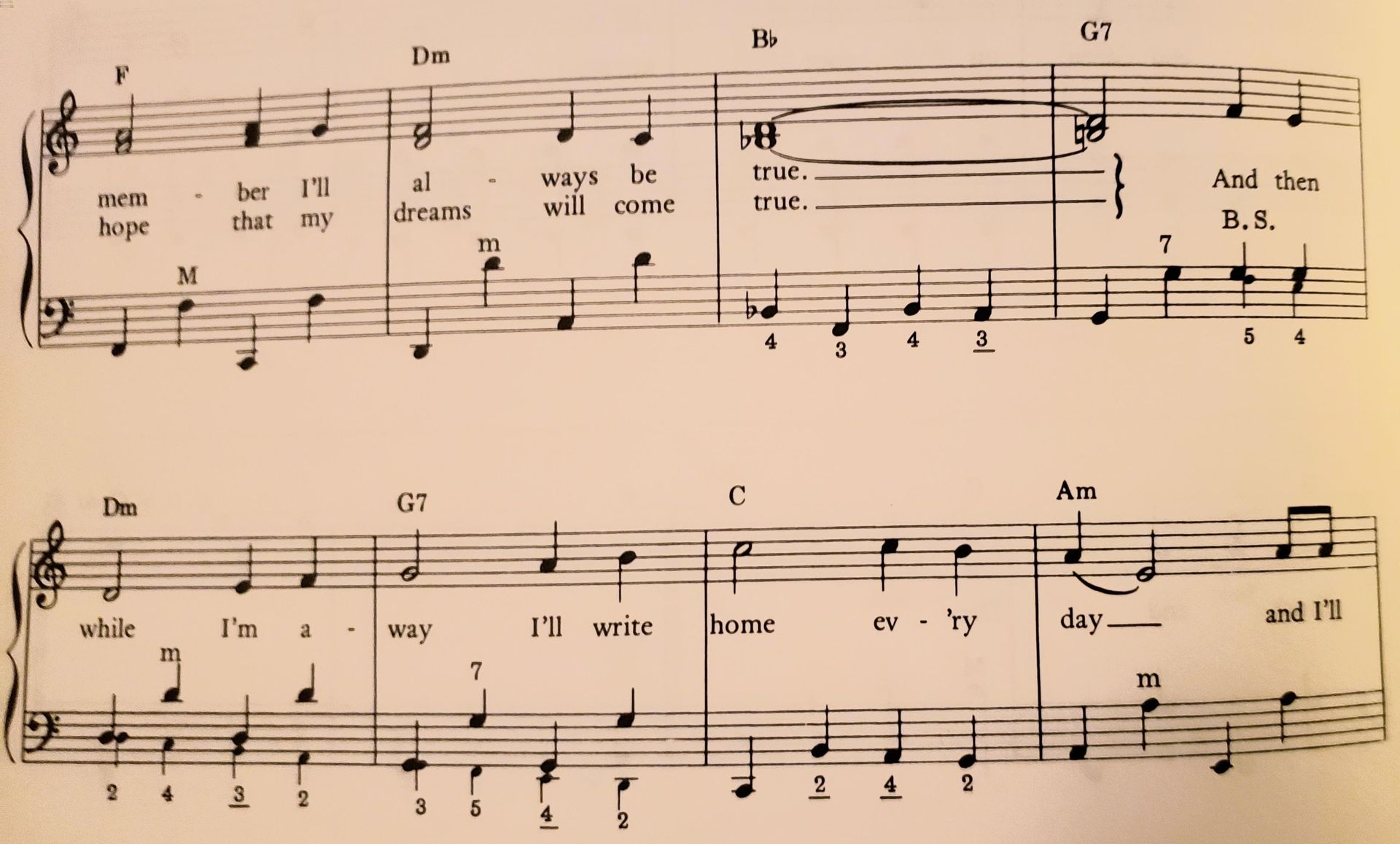Home>Production & Technology>Sheet Music>How To Read Sheet Music Clarinet
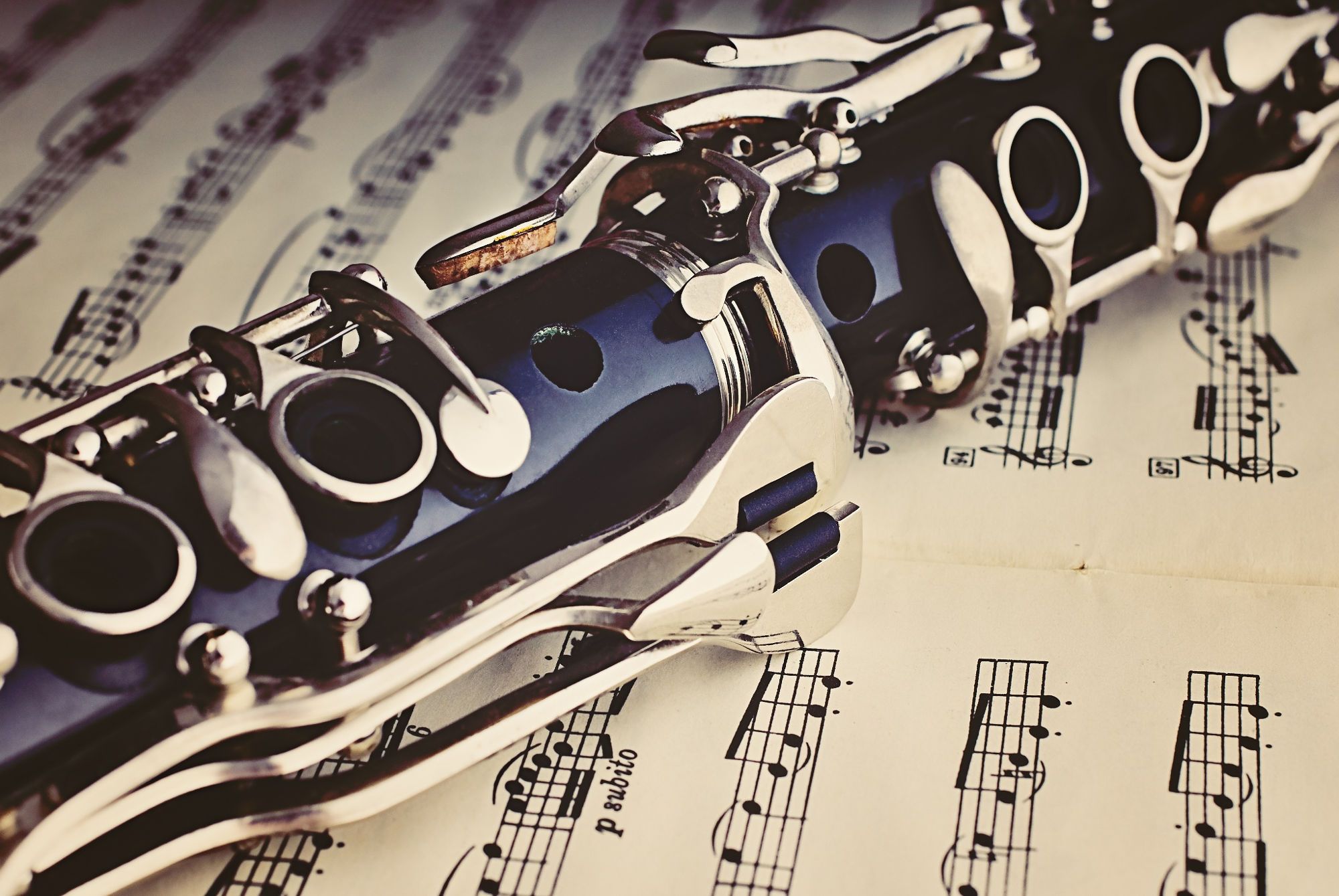

Sheet Music
How To Read Sheet Music Clarinet
Modified: January 22, 2024
Learn how to read sheet music for clarinet with our easy-to-follow guide. Improve your skills and start playing your favorite sheet music today.
(Many of the links in this article redirect to a specific reviewed product. Your purchase of these products through affiliate links helps to generate commission for AudioLover.com, at no extra cost. Learn more)
Table of Contents
Introduction
Sheet music is a universal language that allows musicians to communicate and perform music in a structured and precise manner. For musicians, especially clarinet players, understanding how to read sheet music is essential for honing their skills and performing with accuracy. Whether you are a beginner or an experienced musician, learning how to interpret sheet music will open up a world of musical possibilities.
Sheet music is a written representation of music using a system of symbols and notations. It provides a roadmap that guides musicians on pitch, rhythm, dynamics, and other musical elements. By learning to read sheet music, clarinetists can accurately play the notes written by the composer and bring the intended musical expression to life.
This article will guide you through the basics of reading sheet music for the clarinet. We will explore music notation, note reading, key signatures, time signatures, dynamics and articulation marks, interpretation and expression, sight-reading tips, and more. Whether you are a beginner looking to learn the fundamentals or an experienced player looking to brush up on your skills, this article will serve as your comprehensive guide to reading sheet music for clarinet.
The Basics of Sheet Music
Sheet music is comprised of a series of symbols and notations that represent musical elements such as pitch, rhythm, and dynamics. Understanding these symbols is crucial for reading and performing sheet music accurately.
At its core, sheet music consists of two main components: the staff and the musical notes. The staff is a set of horizontal lines and spaces that act as a framework for the notes. On the staff, each line and space represents a specific pitch. The notes are placed on the staff to indicate the pitch that should be played.
The staff is composed of five lines and four spaces. The lines, from bottom to top, are labeled E, G, B, D, and F using a mnemonic device such as “Every Good Boy Does Fine.” The spaces, from bottom to top, are labeled F, A, C, and E using a mnemonic device such as “F-A-C-E.”
Musical notes are written on the staff using oval-shaped characters called noteheads. The position of the notehead on the staff indicates the pitch that should be played. The vertical placement of the notehead on the staff represents the pitch, with higher notes positioned higher on the staff and lower notes positioned lower on the staff.
In addition to noteheads, other symbols and notations are used in sheet music. These include various types of lines and curves, such as sharps, flats, and natural signs, which indicate alterations to the pitch. Time signatures indicate the rhythm and timing of the music, while dynamic markings indicate the volume and intensity of the music. These symbols and notations work together to provide a complete representation of the musical composition.
Familiarizing yourself with the basics of sheet music will provide a solid foundation for understanding and interpreting musical compositions on the clarinet. In the next sections, we will delve deeper into the specific aspects of sheet music notation and how to read them effectively.
Understanding Music Notation
Music notation is a system of symbols and markings that represent the various elements of music, such as pitch, rhythm, dynamics, and expression. Familiarizing yourself with these notations will greatly enhance your ability to read and interpret sheet music for the clarinet.
One of the fundamental elements of music notation is the clef. The most common clef used for the clarinet is the treble clef, also known as the G clef. It indicates that the second line from the bottom of the staff represents the pitch G. The notes above and below this line can be easily identified based on their position on the staff.
The notes on the staff are represented by specific shapes and stem orientations. The most commonly used note shapes are the whole note, half note, quarter note, eighth note, and sixteenth note. The stems on these notes can be oriented upwards or downwards, depending on their position on the staff.
Pitch alterations, such as sharps (#), flats (b), and naturals (♮), are indicated by symbols placed before the note. A sharp raises the pitch by a half step, a flat lowers the pitch by a half step, and a natural cancels any previous alterations and represents the natural pitch of the note.
Music notation also includes various symbols and markings to indicate dynamics and expression. Dynamic markings, such as pianissimo (pp), piano (p), mezzo piano (mp), mezzo forte (mf), forte (f), and fortissimo (ff), indicate the volume or intensity of the music. Articulation marks, such as staccato (.), legato (-), and accent (>), provide instructions on how the notes should be played, whether short and detached or smoothly connected.
Understanding music notation is like learning a new language. It takes practice and familiarity to become fluent. By studying and practicing the symbols and markings used in sheet music, you will gain the ability to read and interpret music with greater accuracy and musicality.
Reading Notes on the Staff
Reading notes on the staff is essential for understanding the pitch of the music you are playing on the clarinet. Each note on the staff corresponds to a specific pitch, and learning to identify these notes will help you play the correct melody.
As mentioned earlier, the staff consists of five lines and four spaces. Each line and space represents a specific pitch. The lines, from bottom to top, are labeled E, G, B, D, and F using a mnemonic device such as “Every Good Boy Does Fine.” The spaces, from bottom to top, are labeled F, A, C, and E using a mnemonic device such as “F-A-C-E.”
The position of the notehead on the staff indicates the pitch that should be played. For example, if a notehead is placed on the second line from the bottom, it corresponds to the pitch G. If a notehead is placed in the space between the third and fourth line, it corresponds to the pitch B.
In addition to the position on the staff, other factors also affect the pitch of the note. These factors include the clef, key signature, and any pitch alterations indicated by sharps, flats, or naturals. You must take all these factors into account when reading the notes and playing the correct pitch on the clarinet.
It’s important to differentiate between the pitch and duration of the notes. While the position on the staff represents the pitch, the shape and stem orientation of the note indicate its duration. Whole notes, half notes, quarter notes, eighth notes, and sixteenth notes each have a specific appearance that allows you to determine their duration.
Practicing regularly and familiarizing yourself with the pitch and duration of notes on the staff will improve your ability to read and play music fluently. As you become more comfortable with note reading, you will be able to quickly identify and play the correct pitches on the clarinet.
Recognizing Key Signatures
Key signatures play a crucial role in sheet music notation as they indicate the key in which a piece of music is written. Understanding key signatures is essential for clarinet players as it affects the notes they will play and the overall tonality of the music.
A key signature is represented by a combination of sharps or flats placed at the beginning of a staff, right after the clef symbol. The key signature establishes the tonal center or the tonic note of a piece. It tells you which notes are altered throughout the composition.
Key signatures can have varying numbers of sharps or flats depending on the key. For example, the key of C major has no sharps or flats, while the key of G major has one sharp (F#) and the key of F major has one flat (Bb). Understanding the order and placement of sharps or flats in key signatures will help you quickly identify the key of a piece.
It’s important to note that when a key signature indicates sharps or flats, those alterations apply to all notes of the same pitch throughout the piece. For example, if a piece is written in the key of G major with one sharp (F#) in its key signature, all F notes in the piece will be played as F# by default.
Recognizing key signatures and understanding their impact on the music will assist you in playing the correct notes and maintaining the intended tonality of the composition. Practice identifying key signatures by sight and understanding the relationship between the key signature and the notes played on the clarinet.
By becoming proficient in recognizing key signatures, you will enhance your ability to read and perform sheet music accurately and effectively on the clarinet.
Time Signatures and Rhythmic Values
Time signatures and rhythmic values are vital components of sheet music notation that determine the timing and duration of musical notes. Understanding time signatures and rhythmic values is crucial for accurately interpreting the rhythm of a piece on the clarinet.
A time signature is typically displayed at the beginning of a piece and consists of two numbers stacked vertically. The top number represents the number of beats per measure, while the bottom number indicates the kind of note that receives one beat. For example, in a time signature of 4/4, there are four beats per measure, and a quarter note receives one beat.
The rhythmic values of notes determine their duration and are indicated by different note shapes. The most common note values include the whole note, which receives four beats; the half note, which receives two beats; the quarter note, which receives one beat (in a 4/4 time signature); the eighth note, which receives half a beat; and the sixteenth note, which receives a quarter of a beat.
Rhythmic values are further divided by adding flags or beams to the note stems. For example, two flags or beams transform an eighth note into a sixteenth note, and three flags or beams turn it into a thirty-second note.
Rests, indicated by specific symbols, represent periods of silence or pauses in the music. Rests have the same rhythmic values as notes, and their duration corresponds to the beat they receive in the given time signature. Rests are crucial in maintaining accurate rhythm and timing while playing the clarinet.
To play a piece with precision, it is essential to understand the time signature and rhythmic values. Practicing rhythmic exercises and counting aloud will help internalize the timing and improve your ability to play rhythms accurately.
By mastering time signatures and rhythmic values, you will ensure that your clarinet playing is in sync with the music and convey the intended rhythm and pulse of the composition.
Dynamics and Articulation Marks
Dynamics and articulation marks are crucial elements of sheet music notation that convey the desired volume, intensity, and expression of the music. Understanding and interpreting these markings is essential for bringing the music to life on the clarinet.
Dynamics indicate the volume at which a section or passage of music should be played. They are typically represented by abbreviations or symbols placed above or below the staff. Common dynamic markings include pianissimo (pp), piano (p), mezzo piano (mp), mezzo forte (mf), forte (f), and fortissimo (ff). These markings provide guidance on the intensity and overall volume of the music.
Articulation marks indicate how each note should be played in terms of attack, duration, and release. These marks help shape the character and phrasing of the music. Common articulation marks include staccato (.), which indicates short and detached notes; legato (-), which indicates smooth and connected notes; accent (>), which emphasizes a specific note; and marcato (^), which indicates a strong and accented note.
Phrasing marks are also used to indicate musical phrasing and how notes are grouped or connected. Slurs (curved lines) are used to connect a group of notes, indicating that they should be played smoothly without separating each note. Breath marks (‘) or caesuras (//) indicate points where the performer should take a breath or pause briefly.
Interpreting dynamics and articulation marks is essential for expressing the musical intent of the composer on the clarinet. It allows you to convey the intended mood, emotions, and stylistic nuances in your performance.
It is important to remember that dynamics and articulation marks are not fixed rules, but rather suggestions. They can be interpreted and adjusted to suit your musical interpretation and personal expression. Experiment with different dynamics and articulations to bring your unique style and interpretation to the music.
By understanding and applying dynamics and articulation marks effectively, you will enhance the expressiveness and musicality of your clarinet playing, breathing life into the sheet music.
Interpretation and Expression
Interpretation and expression are key aspects of performing sheet music on the clarinet. While sheet music provides the foundation and structure of a piece, it is through interpretation and expression that musicians bring their unique artistic voice and emotions to the music.
Interpretation involves understanding the composer’s intention, style, and musical language. This includes studying the historical context of the composition, the composer’s background, and the musical conventions of the time. By delving into these aspects, you can gain insight into the mood, emotions, and character of the music.
Expression, on the other hand, is the way in which you communicate and convey the emotions and musical ideas to the audience. It involves using dynamics, articulation, phrasing, and other musical elements to add depth, nuance, and personal flair to your performance.
When interpreting and expressing a piece on the clarinet, it is essential to consider the overall musical structure, the emotional arcs within the composition, and the relationship between different musical elements. By carefully shaping the dynamics, articulation, and phrasing, you can highlight the melodic lines, bring out the harmonies, and create contrast and tension in the music.
Additionally, taking liberties with tempo, such as emphasizing rubato (flexible tempo), can add a sense of expressive freedom and spontaneity to your playing. However, it is important to do so tastefully and in accordance with the musical style and the composer’s intentions.
Interpretation and expression allow you to showcase your personal musicality and bring a unique interpretation to each performance. Remember, no two interpretations are alike, and it is through the exploration of different ideas and approaches that you can truly make a piece your own.
By studying the score, experimenting with various interpretive choices, and connecting emotionally to the music, you will be able to deliver a captivating and expressive performance on the clarinet.
Sight-Reading Tips
Sight-reading is the ability to read and perform a piece of music in real-time without prior practice. It is a valuable skill for any musician, including clarinet players, as it allows them to quickly learn and perform new music. Here are some tips to improve your sight-reading abilities:
- Scan the music before you start: Take a few moments to scan the entire piece before you begin playing. Look for key signatures, time signatures, tempo markings, and any challenging sections that may require extra attention.
- Focus on the rhythm: Pay close attention to the rhythmic patterns and values of the notes. Counting aloud, tapping your foot, or using a metronome can help you maintain a steady tempo and rhythm.
- Keep a steady tempo: Even if you make mistakes, try to maintain a consistent tempo throughout the piece. It is better to keep the music flowing than to stop and correct every mistake.
- Look ahead: Practice looking ahead as you play, anticipating the upcoming notes and rhythms. This will help you stay prepared and minimize mistakes.
- Play simplified versions first: If a passage is particularly challenging, try simplifying it by playing only the main melody or the most essential notes. Gradually add complexity once you feel more comfortable.
- Focus on the key elements: When sight-reading, prioritize the melody, rhythm, and basic harmony. These elements form the foundation of the piece and should be your main focus.
- Practice regularly: Sight-reading is a skill that improves with practice. Set aside dedicated time to sight-read music regularly, even if it is just a few minutes each day.
- Vary your practice material: Challenge yourself by sight-reading music of different genres, styles, and difficulty levels. This will broaden your musical vocabulary and improve your adaptability.
- Stay relaxed: Tension and stress can hinder your sight-reading abilities. Remember to breathe deeply, relax your muscles, and approach sight-reading with a calm and focused mindset.
- Don’t dwell on mistakes: Mistakes are inevitable when sight-reading. Instead of getting stuck on errors, keep moving forward and focus on the overall musicality and flow of the piece.
With consistent practice and application of these tips, your sight-reading skills will gradually improve. Remember to be patient with yourself and celebrate your progress along the way!
Conclusion
Learning how to read sheet music is an essential skill for clarinet players. It opens up a world of musical possibilities, allowing you to accurately interpret and perform a wide range of compositions. By understanding the basics of sheet music, recognizing key signatures, reading notes on the staff, grasping time signatures and rhythmic values, and interpreting dynamics and articulation marks, you can bring life and expression to your clarinet playing.
Sheet music provides a roadmap that guides you through the musical journey, and by mastering the language of notation, you gain the freedom to express yourself and communicate with fellow musicians. It takes practice, dedication, and a willingness to immerse yourself in the art of music notation. But the rewards are immense.
Sight-reading, another vital skill discussed in this article, allows you to quickly learn and perform new music. By employing effective sight-reading techniques, such as scanning the music, focusing on rhythm, and keeping a steady tempo, you can confidently take on new musical challenges and expand your repertoire.
Remember, music is not just about hitting the right notes. It’s about expressing emotions, telling stories, and creating a connection with the listeners. Through interpretation and expression, you bring your unique musical voice and emotions to the music, making each performance a personal and captivating experience.
So, continue to practice, explore new pieces, and embrace the joys and challenges of reading sheet music for the clarinet. As you continue your musical journey, remember that sheet music is more than just black dots on paper—it is a gateway to creativity, emotion, and the art of musical expression.

